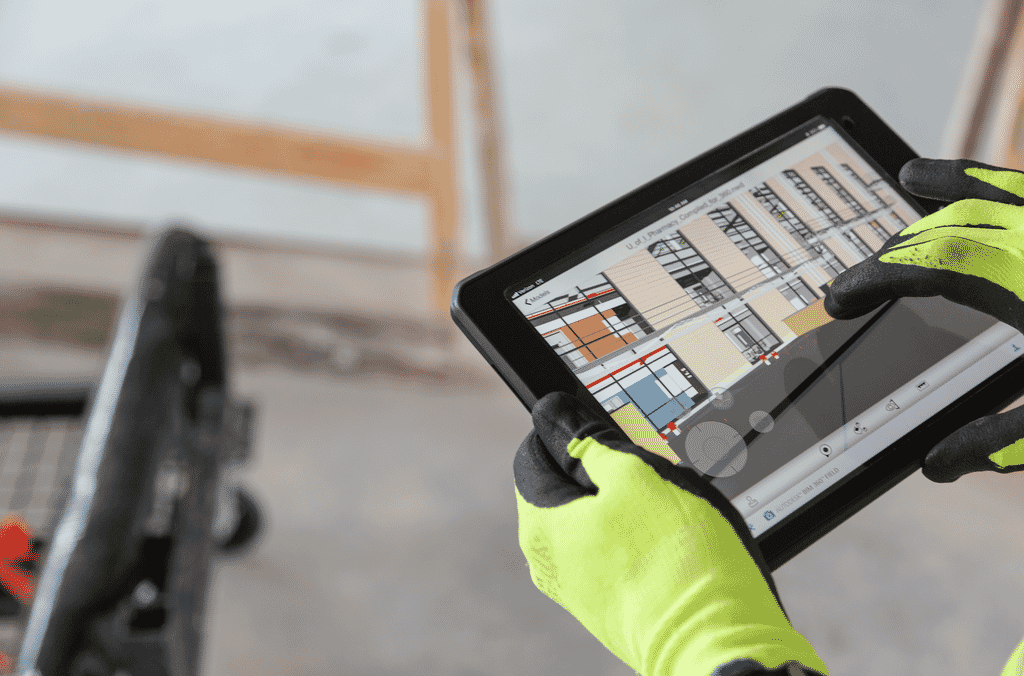Reaching New Heights with Connected BIM
Here’s everything you need to know about Lee Valentine. He’s an expert within the architecture, engineering and construction (AEC) industries. Lee previously worked in a technical design team, helping all manner of customers with queries ranging in complexity, while building the skills and experiences that make up his notable background. His years in the sector mean that he’s better equipped to inform us about the wondrous applications of BIM as anyone else you’re likely to hear from in the near future.
Despite BIM’s tedious 2016 government mandate background, hear us out on why it should still be at the top of any constructor’s (digital or otherwise) list.
Some in the industry have the idea that BIM is solely used to produce architectural plans, we’re guessing that you think there’s more to it?
Yes of course it’s much more. Building Information Modelling is an end-to-end solution for built environments. If you limit its use to design, coordination and construction of the environment you’re working on, then you’re missing the big picture of BIM’s functionality. It’s a lifecycle manager. The BIM model represents the entire project lifecycle from the beginning of surveying and initial design periods through to the construction of the environment, which remains uninterrupted until the building in question is demolished.
People perceive BIM to be a daunting, mammoth task. Have you encountered any customers experiencing this feeling?
Naturally any workflow process design is a potentially discouraging prospect. However, BIM provides the ability to manage and simplify these frameworks – and once they are correct, everything else will fall into place. Implementing steps one at a time is the key to keeping the BIM complexities at bay. Design process, templates, metadata and the way that data flows through the CDE (Common Data Environment). That sounds needlessly convoluted, however in separating these concepts into manageable steps it then becomes an easy task – one that will see any customers conquer their project predicaments.
Are you currently working with a customer to help them transition to BIM from more traditional AEC design methods?
Many are experimenting with the idea of BIM, and it means that there is a large uptake in those actioning a transition into it. Although, as with most things, there is a route of progression that new clients will follow in relation to their BIM integration: from 2D to 3D design, to making partial use of BIM functionality, then integrated BIM and finally fully cloud connected BIM. Some clients will not opt to become fully cloud connected immediately. Making small steps with customers can help to show them the bigger picture of BIM functionality if it’s not immediately apparent; it also keeps the whole system from appearing overwhelming.
What are the most prominent ways in which workflows are being transformed for customers?
The flow of information between key project stakeholders is not only neatly organised but is also streamlined across the variety of roles within a given project. For example, the client, the contractor, the architect and the engineer all have different skill sets – but the information is shared in a format that allows for easy interpretation across the board. This is where the cloud software begins to display its more conducive applications.
In streamlining collaborative projects, what ways are management functions becoming more efficient?
The ability to review events in the project timeline and the historic data behind collaboration process is wholly advantageous for any management position. The different forms of collaboration are all affected positively, like synchronous collaboration that occurs in real time. It’s possible for work to be accomplished simultaneously due to the instant updating of information as soon as work is completed, thus providing a barrier to duplicated work efforts. Of course, management can also review asynchronous collaboration, which becomes a more viable concept due to the effective distribution of project materials, allowing for teams to coordinate across geographical divides, as is becoming increasingly common.
Can you roughly explain the importance of choosing the correct tool when preparing BIM implementation?
If you start on the wrong foot then the project lifecycle is in jeopardy of becoming hugely inefficient before any other decisions have been made, and the team won’t be singing from the same hymn sheet. The synchronisation with software across multiple teams needs to allow data to flow correctly, and each member of those teams needs to utilise the data that is contributed to the wider environment.
A barrier for some smaller companies in choosing BIM is that their workload isn’t complex enough to warrant the purchase of the software. Would you say that companies making smaller, less complex designs would still benefit from the BIM investment?
61% of businesses have reported improved cost-efficiency stemming from the use of BIM, likely due to the reduction of wasted time spent on reworks and duplications of design. Regardless of whether the project has to be to a specific BIM level or not, by cherry picking BIM functions such as communication, logistics, costing or degree of information provided in drawings, you can choose the best of BIM according to your project’s needs. Every company benefits from small improvements to their processes, because not every BIM user is going to be creating immense models. Some companies think it is all or nothing regarding BIM integration, but as previously mentioned, there’s value in occupying any point along the integration spectrum.
Is it worth your time using BIM to transform 2D designs fully realised in 3D?
The impact that 3D models have in teams lacking engineering knowledge is hugely positive, because it allows for the simple interpretation of potentially perplexing designs. Equally, when communicating ideas and designs to the client they would have a better understanding of project aspects if they can view a realised model. Beyond that, BIM facilitates access to both 2D and 3D information that occupy the same design space, so the client can see the nice 3D model, but the fabricator that needs the 2D design is also satisfied.
Any comments on how BIM can help to capture reality?
3D surveys accurately scan the existing environment of the site to better move forward. Using drone data, photogrammetry or point-cloud data puts teams and client teams in a better position to accurately measure the existing design parameters.
Final question – and it’s a big one – can companies afford to ignore BIM?
It would be to their considerable detriment if a company completely ignored it. It’s a given that if you’re BIM accredited then you can win more business. However, context is everything. Full cloud connected BIM isn’t going to fit every company’s needs.You can still get the best out of the software for the correct project condition without fully complying with BIM mandate, and through utilising only the aspects of the framework for respective company scenarios. One thing that must be said is that people need to become aware of the tools that are available to them.
Digital construction techniques have a wide range of advantageous applications, and certainly too many for anyone to ignore it absolutely.
Related Courses






